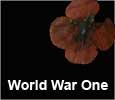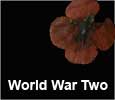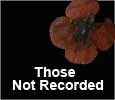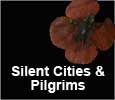In that Rich Earth
Viller's Station Cemetery
Chilliwack and Villers au Bois, two communities, separated by a continent and an ocean, but forever linked in remembrance. The French village of Villers Au Bois is located eleven kilometers north-west of the city of Arras. Two kilometers north-west of the village is Villers Station Cemetery managed by the Commonwealth War Graves Commission where 1,208 Commonwealth soldiers and 32 German soldiers of the First World War are buried. It is here where seven Chilliwack soldiers lie amongst their brethren, their places marked by the familiar war graves headstones, within a sea of vertical white markers.
The cemetery was started by the French prior to July 1916 when the Somme offensive began and was later used by Commonwealth Divisions and field ambulances until September 1918. Canadian headquarters was located nearby and several graves reflect Canada’s involvement in the April 1917 Battle of Vimy Ridge. Following the Armistice, in November 1918, a few nearby, but isolated, graves were re-interred at this location. In all 1,007 graves belong to soldiers of the Canadian Expeditionary Force.
In June 1923 French soldier’s graves at this cemetery were removed. Most were reburied at the 13,000 hectare Notre-Dame-de Lorette French National Cemetery where nearly 40,000 identified and unknown French soldiers rest within the grounds and ossuary. However, nearly 120,000 soldiers from both sides were killed in this sector during the battle of Notre- Dame de Lorette from October 1914 to October 1915.
As one moves about Villers Station Cemetery row on row the myriad of uniform headstones, engraved with scant service details, occasionally are engraved with inscriptions paid for by the families of the fallen. However, for mourning Canadian families these inscriptions were paid for by the Canadian government. Some passages are familiar, others lost to time, and some simply stated are imbedded with timeless significance. It is within these walls that the “emotional archaeology” of this past beckons to the visitor. Who were these people, this generation of King and Country?
The cemetery itself is a short walk from the main road to the gate entrance. It is bordered by a dirt road and farmer’s fields where on this day’s outing potatoes are being harvested. As the machines noisily deliver the “pomme de terres” to waiting trailer trucks, one cannot help but think of a distant noisy past where the sounds of artillery, machine guns, and the cacophony of war reverberated throughout this now peaceful landscape. These places, where soldiers lie at rest have always been, and will continue to be destinations for pilgrimages made by family, friends and other visitors. For this visitor each cemetery, each headstone signifies a loss beyond the collective communal loss of soldiers in arms. These “band of brothers”, reflect missing moments and endless possibilities, family and friends left to mourn, “in that rich earth a richer dust concealed.”
Chilliwack Soldier
Date of Death
Battalion
Private Harrison Raymond Allen
December 2, 1916 16th CEF Private George Burch
February 13, 1917 47th CEF Private John Bertram Carvolth
March 1, 1917 54th CEF Private William Tweedle Pake
March 28, 1917 46th CEF Lieutenant Richard Arthur Henderson
April 11, 1917 54th CEF Private Albert Amran Henry Reid
June 19, 1917 72nd CEF Private Glen Dickie
August 30, 1917 72nd CEF




Chilliwack Museum and Archives 45820 Spadina Avenue, Chilliwack, BC, Canada V20 1T3 [604.795.5210]



